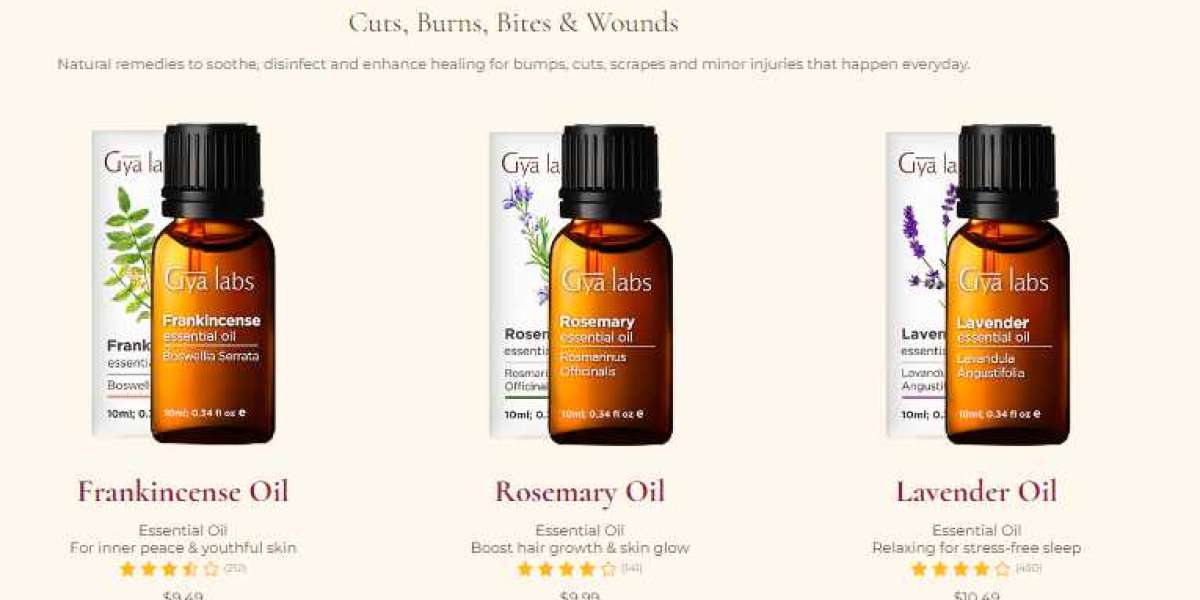When used properly, essential oils for cuts can be a safe and effective way to treat cuts and promote skin regeneration. However, it's important to note that essential oils are potent and should always be diluted before applying to the skin.
Choosing the Right Essential Oils for Cuts and Skin Regeneration
There are a number of essential oils that can be used to treat cuts and promote skin regeneration. Some of the most popular and effective options include:
- Lavender essential oil: Lavender is one of the most versatile and popular essential oils, and it's also a great choice for treating cuts and skin conditions. Lavender oil has anti-inflammatory, antiseptic, and analgesic properties, which can help to reduce pain, swelling, and redness. It can also help to promote cell growth and healing.
- Frankincense essential oil: Frankincense oil is another popular essential oil for wound healing. It has anti-inflammatory, antimicrobial, and antioxidant properties. Frankincense oil can help to reduce inflammation and redness, promote cell growth, and protect the skin from infection.
- Tea tree essential oil: Tea tree oil is known for its powerful antiseptic and antibacterial properties. It can be used to cleanse and disinfect cuts and wounds, and to prevent infection. Tea tree oil can also help to reduce inflammation and promote healing.
- Calendula essential oil: Calendula oil is another popular essential oil for wound healing. It has anti-inflammatory, antibacterial, and antifungal properties. Calendula oil can help to reduce inflammation and redness, promote cell growth, and protect the skin from infection.
- Helichrysum essential oil: Helichrysum oil is known for its anti-inflammatory, antioxidant, and wound-healing properties. It can be used to reduce pain, swelling, and redness, and to promote cell growth and healing. Helichrysum oil can also help to reduce the appearance of scars.
How to Use Essential Oils for Cuts and Skin Regeneration
Essential oils can be used in a variety of ways to treat cuts and promote skin regeneration. Some common methods include:
- Topical application: Essential oils can be applied directly to the skin, but they must always be diluted with a carrier oil first. A good ratio to use is 1 drop of essential oil to 10 drops of carrier oil.
- Compresses: Essential oils can also be used in compresses. To make a compress, simply add a few drops of essential oil to a bowl of warm water. Soak a clean cloth in the water and apply it to the affected area for 10-15 minutes.
- Baths: Essential oils can also be added to baths. To do this, add 5-10 drops of essential oil to a warm bath. Soak in the bath for 15-20 minutes.
Safety Precautions When Using Essential Oils
Essential oils are potent and should always be used with caution. Here are some important safety precautions to keep in mind:
- Always dilute essential oils with a carrier oil before applying to the skin.
- Avoid contact with the eyes, nose, and mouth.
- Do not use essential oils on broken or irritated skin.
- If you are pregnant or breastfeeding, talk to your doctor before using essential oils.
- If you have any underlying health conditions, talk to your doctor before using essential oils.
Recipes for Using Essential Oils to Treat Cuts and Promote Skin Regeneration
Here are a few recipes for using essential oils to treat cuts and promote skin regeneration:
- Lavender and frankincense wound healing balm: Mix 1 drop of lavender essential oil and 1 drop of frankincense essential oil with 1 tablespoon of coconut oil. Apply the balm to the affected area 2-3 times per day.
- Tea tree oil and calendula oil compress: Mix 1 drop of tea tree essential oil and 1 drop of calendula essential oil with 1/4 cup of warm water. Soak a clean cloth in the water and apply it to the affected area for 10-15 minutes.
- Helichrysum oil bath: Add 5-10 drops of helichrysum essential oil to a warm bath. Soak in the bath for 15-20 minutes.
If you are new to using essential oils, it's a good idea to start with a small amount and see how your skin reacts. If you experience any irritation, stop using the essential oil immediately.
Essential oils can be a safe and effective way to treat cuts and promote skin regeneration. When used properly, essential oils can help to reduce pain, swelling, and redness, and to promote cell growth and healing.



